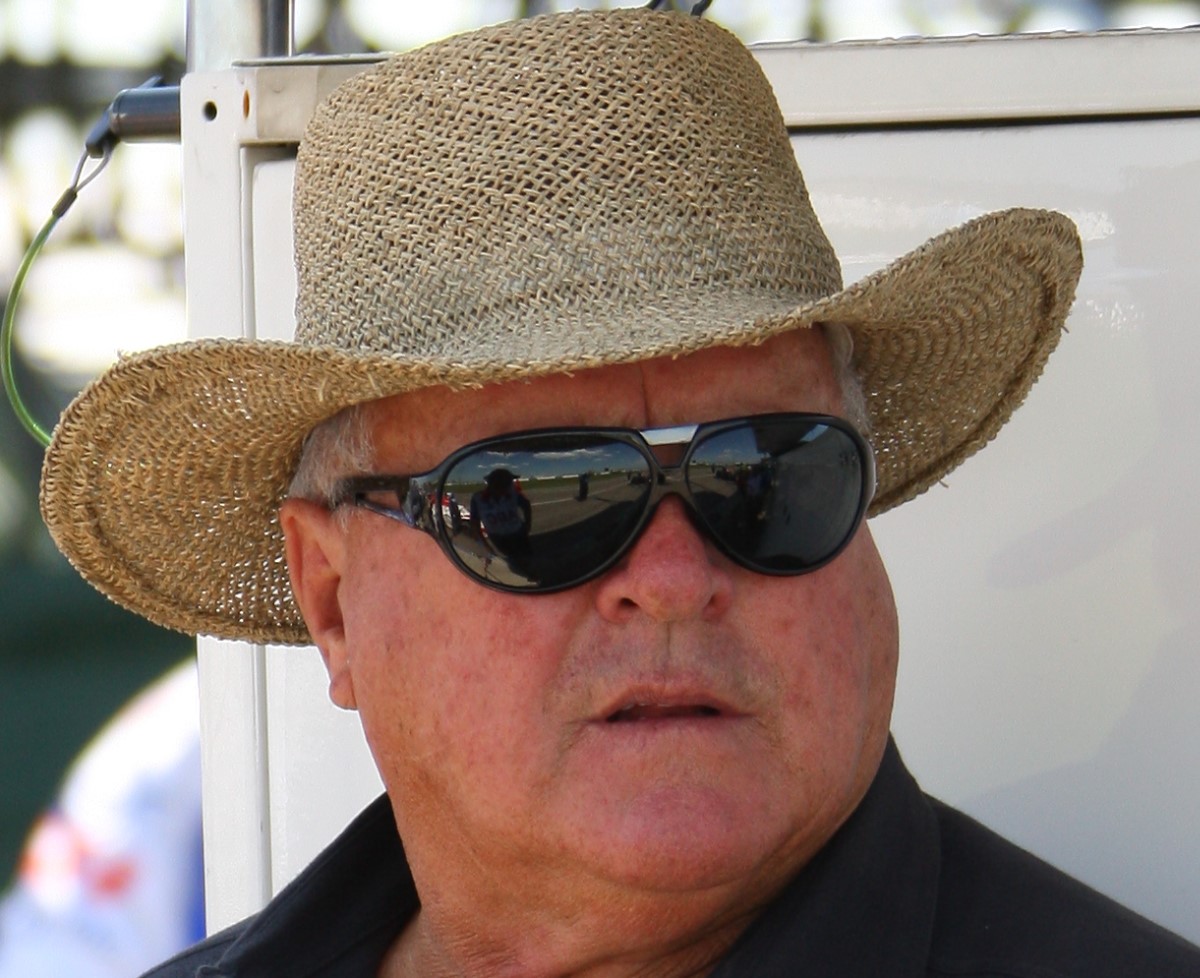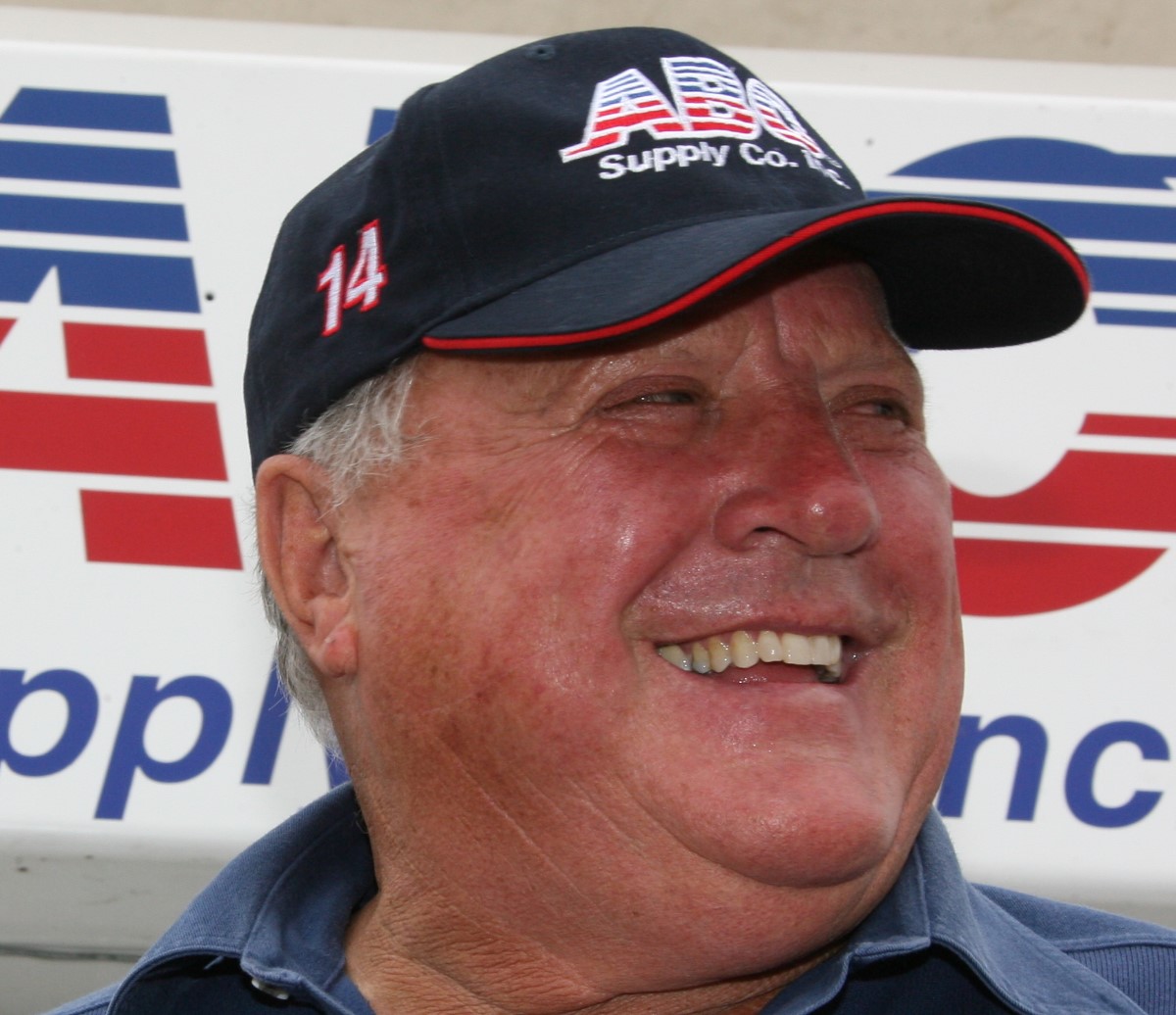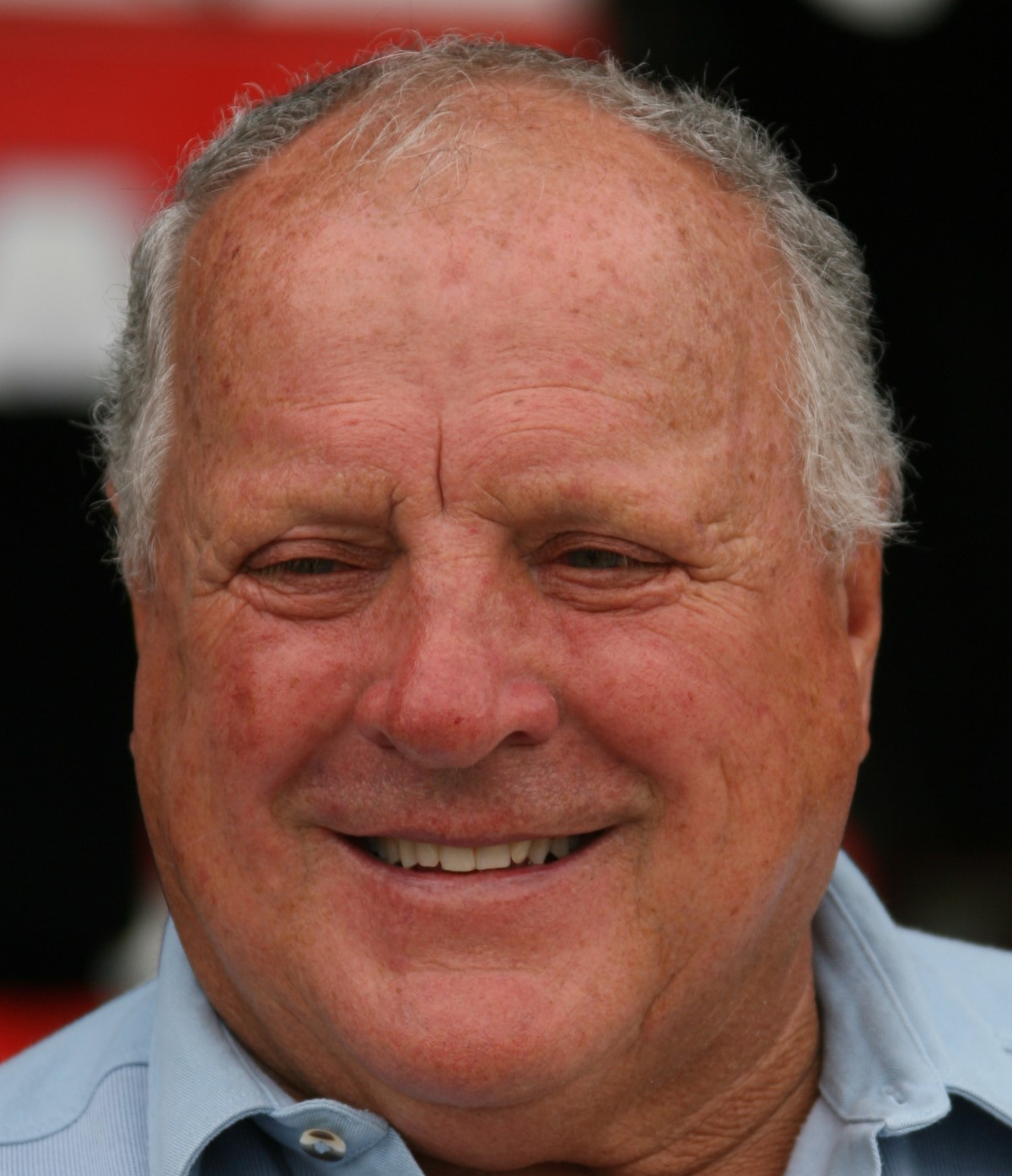One of Americas racing legends turns 75 today
 |
 |
 |
 |
| A.J. Foyt |
A.J. Foyt, who turns 75 today, will celebrate his 50th anniversary of racing Indy cars this season adding yet another milestone to one of the most remarkable careers in motorsports. It began with a single race on a dirt track in Springfield, Illinois in the summer of 1957 and turned into a globetrotting romp of racetracks throughout North America and in Europe, Australia and Asia. However, the Texan’s most memorable races took place here in America’s heartland, especially at Indianapolis Motor Speedway where he became the first four-time winner of the Indianapolis 500.
This year Foyt will compete in his 50th straight Indy 500, 35 of which he did as a driver, a record unlikely to ever be broken. He also holds the records for most career victories (67), most national championships (7), and most triumphs in one season (10). He is the only driver to win these the crown jewels of motorsports: the Indy 500, the Daytona 500 and the 24 Hours of Le Mans.
“It’s hard for me to believe that I’ve been racing Indy cars for over 50 years," said Foyt. “I’ve had so many good memories, and some not-so-good, but I wouldn’t trade any of it.
“It’s nice that people want to look back at some of the things I’ve accomplished over the years, but to be truthful, I like to focus on what’s ahead. We’re going to have a really good year. With my son Larry coming in as team director, it’s taken some of the pressure off of me and my team manager Craig Baranouski. We’re real happy to have Darren Manning as our driver. He wants to win as bad as we do."
Winning has been the hallmark of Foyt’s career: winning in NASCAR, USAC stock cars, midgets, sprints, IMSA sports cars and of course, Le Mans. He won 12 national titles and 172 major races in his driving career, which spanned four decades and three continents: North America, Europe and Australia. He has won in five countries—U.S.A., France, New Zealand, Canada, Great Britain—and in 15 of the 19 states in which he has competed.
Yet it was through his adversities that A.J.’s qualities burned brightest. His determination and toughness set him apart from his competition and led to a career that made him auto racing’s most honored champion.
Foyt was born in the post-depression years to a hard-working family in the Heights, a poor section of Houston. His father was an auto mechanic by trade whose passion was auto racing. Foyt grew up working on his father’s midget cars while listening to the stories of the old timers. He learned the value of a dollar and a strong work ethic.
Foyt focused solely on racing. He dropped out of high school several months before graduation to get a jumpstart on his professional career which began in 1953 at Playland Park in Houston.
It wasn’t long before his career took him out of Houston and out of Texas. But the traveling was tough. He slept in his tow vehicle and washed up in gas stations to save money on hotel rooms. After a disappointing month of USAC midget racing in the 1957 Florida Tangerine Tournament, he had to ask his parents to wire him money so he could travel home.
Despite the lack of results, his talent didn’t go unnoticed. Soon he left his own race car at home and began driving for better funded teams. Foyt’s rise to the top levels was meteoric by today’s standards. In August, 1957 (the same year he borrowed money to get home) he landed a ride in championship cars.
The following year he began competing in the Indy 500. As a rookie attempting to make the race, he still couldn’t afford a hotel room. Many homes in the Speedway area rented cots to up-and-coming drivers. Foyt took full advantage of this. He made the race, finished 16th and the car earned $2,969.
Over the years, Foyt proved he was physically and mentally tough. The equipment used at that time did not have the safety features of today’s cars and gear. It wasn’t a matter of if you got hurt, it was a matter of when. Foyt battled back from career-threatening accidents to not only race again, but to win again.
In 1965, he broke his back, fractured his ankle and sustained severe chest injuries in a NASCAR stock car race on the road course at Riverside, California. The track doctor pronounced him dead at the scene but fellow driver Parnelli Jones saw movement and revived him. Still healing 10 weeks later, Foyt began a record-setting run in the Indy cars, winning his first of 10 poles and five races that season.
A year later, he burned his hands and face at Milwaukee when his fuel tank ruptured after hitting the wall. When he didn’t win a race that year, and finished 13th in the points, the media began talking about his retirement.
“When I didn’t win in ‘66, the media began asking when I was going to retire and that made me more determined than ever," he said. “I had a bad year, but I wasn’t ready to hang it up and I didn’t like people hinting I should hang it up. It made me even more determined to win again."
Foyt came back with a vengeance in 1967, winning the national title for a fifth time. He won five races including his third Indy 500. In that race, Foyt had a one lap lead on the field and as he was coming around for the checkered flag, instinct told him to slow because of the pack of cars ahead of him. Coming off turn four, cars were spinning and careening off of walls.
“I couldn’t believe my eyes," said Foyt. “I dropped it into second gear and decided that if I hit anyone I was going to push them across the start finish line. I’d come too far to lose on the front straightaway." That victory tied Foyt with the three-time Indy winners Louis Meyer, Wilbur Shaw and Mauri Rose.
Two weeks after that historic win, Foyt traveled to France and set a new record by winning the 24-Hours of LeMans with teammate, Dan Gurney. It was the first time an All-American team (drivers, car and engine) won the prestigious international sports car race. And it was the first time an Indy 500 winner won the twice around-the-clock event.
Foyt’s legend began to grow beyond Indy cars and beyond U.S. borders. Despite his success overseas (later he would win Indy car races at Silverstone and Brands Hatch in England), Foyt always preferred to race in America.
“My name was made in America and that’s where I want to race," said Foyt when asked about competing abroad.
Foyt’s candor was only outweighed by his toughness which was tested throughout his career, at least once a decade.
The day after the 1972 Indy 500, Foyt competed in a dirt champ car race on the one mile fairgrounds track in DuQuoin, Ill. He was burned during refueling on a pit stop. He also broke his leg when he was run over by his own car as he jumped out while it was still moving. He missed three months of racing but still managed to win the USAC Dirt Champ Car title that season.
In 1977, he became the first driver to win Indy four times. He had come close in 1975 and 1976 finishing third and second, respectively. In ’76, Foyt had ducked into the pits for fuel and gave up the lead. When he returned in second place, the rain began to fall. Officials red-flagged the race after 102 laps and declared it official. It was a tough pill to swallow.
“That’s one I should have won and didn’t," said Foyt. “But I should have won in ’75 too and rain ended that race early too."
Disappointments like that challenge a driver’s mental toughness but Foyt’s physical toughness was tested at the age of 46. His car had a mechanical failure which sent him into the Armco barrier at Michigan Speedway. The impact nearly ripped off his right arm. His own self-styled therapy program-—painting miles of fencing on his 1500 acre ranch—enabled him to return to the cockpit in 1982. He was back in the winner’s circle in 1983 when he won the 24 Hours of Daytona for the first time.
The death of his father in May of that year nearly accomplished what his terrible accidents couldn’t—retirement.
“My father was such a part of my career that when I lost him, I lost my best friend and I really didn’t want to go on racing," he said. “I was lost and I didn’t really know how to handle it. It took me a long time to deal with it."
He competed in only one Indy car race, the Indy 500 but was out after just 24 laps. He raced in stock and sports car events including the Firecracker 400 and the Paul Revere 250, both at Daytona on the July 4th weekend.
After crashing in the stock car practice and injuring his back, Foyt went on to win in the sports car event that night. The next morning he could barely move. A quick flight home by private jet, and a visit to his Houston doctors, revealed he had broken several vertebra in his back. Doctors warned him he couldn’t race until his back healed or he’d risk paralysis.
He listened to his doctors and didn’t compete again that year. Over the next several years, however, Foyt began increasing his schedule and by 1988, he ran 14 out of the 15 races held.
Foyt sustained the worst injuries of his life in 1990 when his brakes failed on his Indy car at Elkhart Lake Wisconsin’s Road America.
Foyt sailed off the mile long straight at nearly 190 mph and flew over the sand trap to land in a dirt embankment. The impact shattered his legs.
“The injuries weren’t life-threatening but I have never felt so much pain in my life," he recalled. “I begged the rescue team to knock me out with a hammer because the morphine wasn’t doing anything."
Foyt underwent several surgeries during his three-week hospital stay. He spent the next six months in a grueling therapy program under the guidance of Steve Watterson, the strength coach of the then Houston Oilers NFL football team.
“I knew people wanted me to retire, heck my own family wanted me to. But I didn’t want to go out on crutches," Foyt said. “I was determined to walk to my race car without crutches."
At 56, Foyt limped to his car, without crutches, and qualified second for the 1991 Indianapolis 500. He was eliminated early when debris from another accident broke his car’s suspension but not before he had shown his own brand of toughness before 400,000 race fans.
Foyt retired from driving Indy cars on May 15, 1993, Pole Day at Indianapolis Motor Speedway. His decision was as abrupt as it was final.
“Robby Gordon was running my other car and he had crashed several times that week in practice," said Foyt. “The yellow came out again in that morning warm-up and when I found out it was Robby, I knew I had to make a decision. I couldn’t drive and be the car owner that a young driver needs. So I came back to the garage and told my team that I was going to quit and I did.
“When I won Indy the first time back in 61, I had a chance to meet Ray Harroun who won Indy in 1911. I asked him when he knew when to quit. He said, ‘It’ll come to you, you’ll just know."
Throughout his storied career, Foyt has defied the odds to emerge triumphant. His accolades include being named the Driver of the Year in 1975, inaugural inductions into the National Motorsports Hall of Fame (Novi, Mich.), the Sprint Car Hall of Fame, and the Miami Project/Sports Legend in Auto Racing (1986). He won the American Sportscasters Association Sports Legend Award in 1993, previous winners were Arthur Ashe and Mohammed Ali. Most recently, he was voted Driver of the Century by a panel of experts and the Associated Press.
As a team owner, Foyt has won the national Indy car title five times (1967, 1975, 1979, 1996 (with Sharp) and 1998 (with Brack). It was also with Brack that Foyt won the 1999 Indy 500 for his fifth visit to victory lane.
As he campaigns throughout his golden anniversary season, Foyt and his ABC Supply/A.J. Foyt Racing team will be fighting hard every week to add yet another highlight to what has indeed been a golden career.
